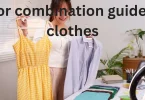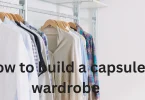Let’s be honest—figuring out what to wear for different occasions can feel like solving a mystery. One moment you’re invited to a “semi-formal” dinner, and the next, you’re trying to decode what “cocktail attire” even means. We’ve all been there—staring at our closets, hoping for inspiration to strike. That’s exactly why having a clear dress code guide for events can save you from last-minute panic and awkward fashion mishaps. It’s like having a friendly roadmap that takes you from “I have nothing to wear” to “I totally nailed it.” Whether it’s a wedding, an office dinner, or a casual hangout, understanding dress codes gives you the confidence to walk in knowing your outfit is appropriate, stylish, and completely you.
Understanding Dress Codes—Why They Matter

Here’s the deal: dress codes aren’t just old-fashioned rules made to limit your creativity—they’re style guidelines that help everyone show up feeling comfortable, confident, and in sync with the occasion. Think of them as silent cues that help you blend in while still standing out for all the right reasons. Imagine showing up to a black-tie wedding in jeans; even if you look good, you might feel a bit out of place. On the flip side, showing up in a ball gown for a casual birthday dinner might make you the center of attention for the wrong reasons. Understanding the intention behind dress codes allows you to express yourself while respecting the tone of the event. It’s about balance—between formality and comfort, trend and tradition, individuality and etiquette.
Casual Dress Code—Laid-Back but Put-Together
Casual dressing sounds simple, but it’s where many people go wrong. It doesn’t mean wearing your pajamas to brunch or throwing on whatever’s clean. It’s all about being relaxed yet intentional. Casual events like picnics, friendly get-togethers, or coffee meetups call for outfits that are easygoing but polished. A pair of well-fitted jeans, soft cotton t-shirts, or a breezy sundress can work wonders. Add simple sneakers or sandals to keep it comfortable. Men can try chinos or jeans with a plain or graphic tee, topped with a casual jacket for that effortless edge. The key here is to look like you didn’t try too hard but still look presentable. Confidence and comfort should guide your choices.
Smart Casual—The Balance Between Effortless and Elegant
Smart casual is where the confusion usually begins. It’s that in-between zone where you can’t be too dressed down, but you also don’t need to go full formal. Think of smart casual as your go-to look for dinners, casual Fridays at work, or a laid-back networking event. For women, this could mean tailored pants, stylish blouses, or a midi dress paired with flats or ankle boots. A structured bag and simple jewelry can add a touch of sophistication. Men can lean towards button-down shirts, chinos, or dark denim, maybe paired with a lightweight blazer. The magic of smart casual lies in mixing structured pieces with relaxed ones. The aim is to look like you made an effort but didn’t stress about it.
Business Casual—Professional but Approachable

Business casual is one of those dress codes that depends heavily on where you work or the type of event. It’s less formal than business professional but still polished enough for an office or conference setting. Women can wear blouses, tailored skirts, or smart dresses that strike a balance between comfort and elegance. A blazer instantly elevates the look, while flats or modest heels keep it grounded. Men should stick to dress shirts paired with slacks and loafers. A sports coat or blazer can be added if needed. Neutral tones—like navy, beige, black, or white—tend to work best, keeping things professional yet approachable. Avoid flashy patterns or overly casual shoes. Business casual is about communicating reliability through style.
Semi-Formal—Elegant Without the Tuxedo
Semi-formal events can include weddings, engagement parties, or evening dinners that feel special but not overly glamorous. It’s that sweet spot where you want to look refined without going all out. Women can go for knee-length or midi dresses, dressy jumpsuits, or chic skirt-and-top combinations. Pair them with heels or elegant flats, and complete the look with subtle accessories. Men can opt for dress pants, a crisp shirt, and a blazer. A tie is optional but recommended if you’re unsure. The fabric and fit of your outfit make a big difference here—silk, chiffon, or tailored materials give that sophisticated touch. Semi-formal dressing is your chance to look sharp, refined, and effortlessly classy.
Cocktail Attire—Chic, Fun, and Celebratory
Cocktail attire brings a playful energy to formal dressing. It’s dressy enough for evening events but allows for personal flair. This dress code usually fits weddings, engagement parties, or festive celebrations. For women, cocktail dresses are an easy choice—sleek, stylish, and perfect for dancing the night away. You can also experiment with jumpsuits or dressy co-ord sets for a modern twist. Add statement earrings, a clutch, and heels to complete the ensemble. Men should go for dark suits, crisp shirts, and polished dress shoes. A pocket square or stylish tie adds character. The idea is to look put-together and festive without being over the top.
Formal or Black Tie—Timeless and Sophisticated
Now we’re entering the high-glam zone. Black tie and formal dress codes are reserved for galas, red carpet events, or upscale weddings. The goal here is timeless elegance. For women, that means floor-length gowns or sophisticated cocktail dresses made from luxurious fabrics like satin or velvet. Accessories should be minimal yet impactful—a clutch, elegant jewelry, and heels will complete your look beautifully. Men should stick with tuxedos or dark suits, formal shirts, polished dress shoes, and bow ties. It’s the kind of attire that commands respect and exudes confidence. Remember, posture and presence matter as much as the clothes themselves—when you feel good, you look even better.
Themed Events—How to Play It Right
Themed events are fun but easy to overdo. The key is to embrace the theme subtly without looking like you’re in costume. For instance, if it’s a “Great Gatsby” party, channel the vibe with a sequined headband or fringed dress rather than going full 1920s costume. If it’s a tropical theme, a floral shirt or maxi dress works perfectly—no need to wear a grass skirt. The trick is to interpret the theme in a chic, modern way that still feels authentic. Accessories, color choices, and patterns are your best tools for nailing the look without losing your personal style.
Outdoor Events—Comfort Meets Style
Dressing for outdoor events means balancing fashion with functionality. You might be dealing with grass, sand, or unpredictable weather, so practicality is key. For daytime events, breathable fabrics like cotton, linen, or lightweight blends are lifesavers. A sundress, flowy skirt, or loose trousers will keep you cool and comfortable. For men, linen shirts and loafers or espadrilles are ideal. If the event is in the evening, bring a shawl, wrap, or light jacket for warmth. Footwear should be sturdy yet stylish—wedge heels or flat sandals for women, and loafers for men. Always check the weather forecast before finalizing your look; being prepared is the ultimate style move.
You may also like this article
Steal the Spotlight with These Latest Celebrity Outfit Ideas
Timeless Elegance: The Most Iconic Celebrity Red Carpet Looks That Stole the Spotlight
How to Dress Like Celebrities and Steal Their Stunning Style
Unlock Stunning Styles with Celebrity Fashion Inspiration 2026
Cultural or Religious Events—Respect and Elegance
Attending cultural or religious events calls for sensitivity and awareness. The best way to show respect is by following the expected dress norms. Modesty often plays a role here—covering your shoulders, knees, or head when appropriate. Women can wear long dresses or traditional attire that aligns with the culture, while men can opt for simple shirts and trousers in neutral tones. Avoid overly revealing or flashy outfits. Dressing respectfully doesn’t mean sacrificing style—it shows understanding and appreciation for the traditions of others, which never goes unnoticed.
Common Mistakes to Avoid
Even fashion-savvy people slip up when it comes to dress codes. Wearing jeans to a formal event, over-accessorizing for a minimalist occasion, or ignoring theme details can throw off your whole look. The goal is to blend respect for the occasion with your sense of style. Always plan ahead and check the event details carefully. If you’re unsure, it’s safer to be slightly overdressed than too casual. A well-fitted outfit, clean shoes, and neat grooming go a long way in making a lasting impression.
Adding Your Personal Touch
Dress codes give structure, but style is personal. Even within guidelines, you can add unique touches that make your outfit feel like “you.” Maybe it’s a statement necklace, a patterned tie, or a pop of color in your shoes. Layering, mixing textures, or playing with silhouettes can bring creativity to your look. The goal is to express yourself within the event’s boundaries—being memorable for your elegance, not for breaking the code.
Quick Checklist Before Any Event
Before heading out, make sure your outfit aligns with the event’s vibe. Ask yourself: Is it comfortable? Is it appropriate? Does it reflect my personality? Check the dress code on the invitation, try your outfit in advance, and make sure everything fits perfectly. Keep a few versatile items like a blazer, a neutral pair of shoes, or a simple clutch ready for last-minute events. Confidence is your best accessory, so wear it proudly.
Conclusion
At the end of the day, dressing for an event isn’t about rigid rules—it’s about feeling confident, comfortable, and authentic. When you understand dress codes, you don’t just follow fashion; you communicate respect, elegance, and awareness through what you wear. Whether it’s a wedding, a party, or a professional gathering, your outfit can tell your story before you even say a word. So take a deep breath, plan ahead, and step out knowing you’ve got it just right. You don’t need an overflowing closet to look amazing—just a little clarity, creativity, and confidence. Remember, fashion is about expressing who you are while honoring the moment you’re part of. You’ve got this—go shine at your next event.
FAQs
What is a dress code guide for events?
A dress code guide for events helps you understand what to wear for different occasions, ensuring your outfit fits the event’s style and formality.
Why is following a dress code important?
It shows respect for the event and its host while helping you look polished and feel confident among guests.
How do I choose the right dress code for an event?
Consider the event type, location, time, and invitation details. These hints usually indicate the appropriate dress code.
Can I add my personal style to a dress code outfit?
Yes, you can express your style through accessories, colors, or textures while still following the event’s dress code.
What are common types of dress codes?
Common types include casual, business casual, cocktail, semi-formal, and black tie, each suited for specific events and settings.





